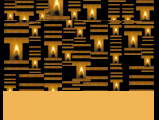DUO: PING & TING
CHAU LOK PING , CHAU LOK TING & FRIENDS
Friday (16 October 2020)
J.S.BACH-HESS Jesu Joy of Man’s Desiring
PIAZZOLLA Le Histoire de Tango
MILHAUD Scaramouche
BIZET-ANDERSON Carmen Fantasy
BARBER Souvenirs
BOLLING Suite for Two Pianists No.2
Jesu, Joy of Man’s Desiring (Jesu bleibet meine Freude) is the beloved chorale from Johann Sebastian Bach’s Cantata No.147 (Herz und Mund und Tat und Leben, or Heart and Mouth and Deed and Life). There have been many arrangements of its choral refrain and flowing accompaniment (a fine melody in itself), the best known being the 1926 piano solo transcription by British pianist Dame Myra Hess. Celebrated for organising concerts at London’s National Gallery during the time of the Blitz, she also arranged it for four hands in 1934, which is the version that opens this evening’s concert.
The Argentine composer and bandoneon (Argentine folk accordion) player Astor Piazzolla transformed the tango genre, elevating the sultry dance from its humble origins to the concert hall’s lofty reaches. L’Histoire du Tango (The Historyof Tango) of 1986 is one of Piazzolla’s most famous works, a 4-movement suite that follows the progress of the dance-form through the decades. This evening’s performance for saxophone and piano showcases its first three movements. Bordel 1900 traces the tango’s sleazy background, accompanying the activities in Buenos Aires brothels. It is rather more playful with counterpoint than being outright sensuous. The more relaxed Café 1930 relives the insouciance and Parisian charm of local coffee shops. Nightclub 1960 takes on a frenetic pace with a central section which wallows in nostalgia for several moments.
The Frenchman Darius Milhaud was the most prolific member of Les Six, the clique of six composers active in Paris during the 1920s, with no less than 443 published works. Alongside the ballet La création du monde (The Creation of the World), Scaramouche for two pianos from 1937 is his most popular work. The title comes Theatre Scaramouche, for whom Milhaud wrote music for a children’s play, some of which appears in the sparkling three-movement suite. He was from 1917 to 1919 a minor diplomat in Brazil, where he absorbed local musical influences like a sponge. Exploring the language of syncopation, jazzy harmonies and exotic rhythms, it includes an exhilarating rumba as its finale, aptly titled Brazileira. Milhaud also scored it for saxophone and orchestra, and this evening’s performance combines both versions.
The dazzling Carmen Fantasy that completes the concert’s first half was crafted by GregAnderson of the popular American piano duo Anderson and Roe. It roughly follows the sequence of popular numbers from Georges Bizet’s hit opera adopted in Sarasate’s Carmen Fantasy for violin. A short introduction and cadenza ushers in the rousing Entracte to Act Four before leading to the lilting Habañera, the flirtatious aria from Act One. Then follows an interlude where the Fate motif is heard before all and sundry is swept away by the heady and swirling Danse Bohemienne (Bohemian Dance) from Act Two. The music, of course, is all familiar but the treatment, influenced by popular music, is contemporary and chic.
The American composer Samuel Barber is best known for his austere Adagio for Strings, regularly associated with the expression of grief at funerals and memorials. On the opposite spectrum is Souvenirs, a suite of six light-hearted and delightful dances composed in 1951 for piano four hands which take the listener back to heady New York City of the Roaring Twenties. In his own words, these vignettes are “remembered with affection, not in irony or tongue in cheek, but in amused tenderness,”
The opening Waltz cheekily recalls Chopin’s Minute Waltz and Ravel’s La Valse but revels its own sense of nostalgia. The Schottische (Scottish dance) is both giddy and playful, contrasted with the melancholic mien of the slow Pas de deux. The Two-Step that follows seems insanely fast alongside the dusky Hesitation Tango, which readily evokes “a setting of the Palm Court in Hotel Plaza Hotel, the year about 1914”. The Galop that closes the set is both bright and brilliant. In 1952, the American duo of Arthur Gold and Robert Fizdale arranged the version for two pianos which we hear this evening.
The French jazz pianist Claude Bolling is well-known for his collaborations with classical musicians over the years. His two Sonatas for Two Pianists are excellent examples of cross-over music. Note that he used the word “Pianists” rather than “Pianos” in the title, indicating that the performers hail from different cultures of music. The First Sonata in C minor dates from the early 1970s when Bolling worked with French classical pianist Jean-Bernard Pommier on a short 5-minute experiment for television. The resulting act was so successful that it was expanded into an extended concert piece.
In performances, both pianists are placed right (jazz) and left (classical) onstage, with bassist and drummer at the centre. The three movements are performed without break. The first, marked Moderato, comprises an introduction, followed a swing theme subjected to a set of variations which get increasingly exuberant. The central slow movement Andante is quiet and reflective in mood, but builds up a head of steam before a spot of ad-libbing from the drummer accompanied by bassist. The finale is an exciting Allegro in 7/4 rhythm, the offbeat giving the music the earthy feel of vigorous folk music, closing the concert on a foot-stomping high.
Programme notes by Chang Tou Liang



